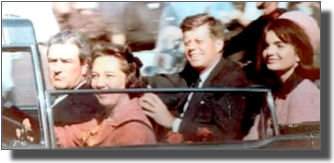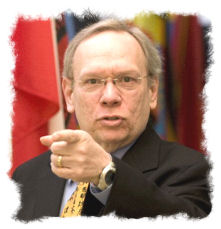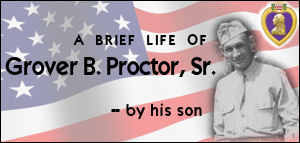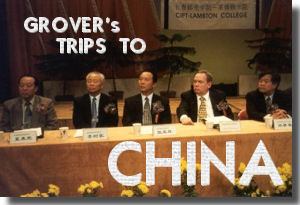|
No analysis of the film's artistic worth, of individual performances or cinematic achievements, or even of the story's place in relation to history or "truth," can hope to compete with The Great Debate. Long before the public had seen the final script, let alone the final film, writer and director Oliver Stone and JFK became immersed in an angry, multi-media public brawl over veracity, propriety, and the "C" word — Conspiracy. Any attempt to put Stone's 188-minute opus in perspective must begin with a look at 28 years of claims and counter-claims, of theories born and witnesses dying, of mystery and deceit. A shocked nation wanted to believe that Lee Oswald had acted alone in killing President John F. Kennedy on November 22, 1963. The Warren Commission, seven good men (it was said), acting on advice from the FBI and the CIA, had told us this, so it must be true. But it all began to unravel. When people began to actually read the record of the investigation and find gaping holes in its method, logic, and conclusions, they found the "lone nut" and "single bullet" explanations insufficient. If one man could not have done it alone, they reasoned, then he must have conspired with others. Thus was born the dreaded word the Warren Commission fought desperately to avoid: conspiracy. Those who had, for whatever reasons, committed most strongly to the Commission's official version were the most shrill in labeling those who questioned it as kooks, malcontents, and conspiracy mongers. But far from inhabiting the lunatic fringe, those in the forefront of the critics were attorneys, physicians, pathologists, journalists, professors, and others with a penchant for intelligent, dogged research. Because there existed only an informal unity among that group, they ultimately splintered into cliques based on their pet theories. Some moved to the fringe, and jealousies and rivalries emerged among others. The theoretical villains ranged from Cuba's Fidel Castro to the Soviet Union's Nikita Khrushchev, from the Mafia to the CIA. Stone's point of view, that the American military and intelligence communities committed a coup d'etat, is but one piece of the multifaceted patchwork quilt fashioned by the critics. But the unifying and self-regulating factor was the publishing of books that shared the fruits of the investigation with the entire community. Regardless of which theory one espoused, it was based on the same set of facts that was set forth in these volumes. While those supporting the "lone nut" theory ridiculed and decried this growing library, the books were this group's barometer and windsock, sharing evidence uncovered, witnesses interviewed, and lapses in the official version. By some estimates, more than 600 books have been published to date worldwide concerning the assassination. At best, maybe two or three dozen emerge as well-written and of crucial value to the investigation today. Volumes by Mark Lane, Anthony Summers, Jim Garrison, and David Lifton, far from fanciful or crazy, are filled with compelling and verifiable facts, witness quotes, and analyses. Collectively, they are an important historical document. And they won over the public, including Oliver Stone. Depending on whose poll you quote, between 55 and 75 percent of Americans today believe there was a conspiracy to kill Kennedy. It should be noted that each of Stone's fast cuts to witnesses and scenes can be shown to have been drawn directly from this public record. As I watched the film unfold, it occurred to me that one could put a footnote about once every 10 or 15 seconds, to show exactly where each scene came from. Furthermore, long-hidden government documents brought to light through the 1974 Freedom of Information Act have shown conclusively that governmental agencies, in particular the CIA, conducted a clandestine domestic war, with the help of sympathetic journalists, to neutralize the message and work of the critics. So, if Stone's film, based on the cumulative efforts of many researchers, shows a distrust of and bias against the government's involvement and the media's cover-up, there is some justification. Stone has been quoted widely about his attempt in this film to "fictionalize" the assassination, and to create a new mythology of the event. It is a poor, if technically accurate, choice of words. Those most closely wedded to the official version have leapt on this and said, "See? Didn't we tell you? There is no truth here and he admits it." However, what he has done is more subtle and literarily permissible than this simplistic response. In "fictionalizing" the story, Stone has collapsed long, laborious facts, witness lists, and theories into one speech or one character, a time-honored device dating to Shakespeare and beyond. Kevin Bacon plays New Orleans low-life Willie O'Keefe, a fictional character, but one whose words and actions are an accurate composite of testimony collected from several witnesses. One of the places where Stone is most liable to be attacked is his decision to place New Orleans District Attorney Jim Garrison, played by Kevin Costner, at the center of the film. Stone was initially bedazzled by Garrison's 1988 book On the Trail of the Assassins, a thoroughly readable and compelling account of the trial of New Orleans businessman Clay Shaw for conspiracy to murder Kennedy. It is unquestionably true that Garrison is the only man to bring someone to trial for the Kennedy assassination, and his accomplishments are either eagerly or warily applauded by other critics, depending on their particular theories. But Stone freely admits that Garrison, a complex man at best, has a darker side to his personality and to his professional life that leaves the film open for criticism. Garrison's supporters claim the vilification he underwent in the media (thus his current image as a wacky crusading crackpot) was part of the government's character assassination program directed at the critics. All this seems of little import, however, because what Stone has chosen to do is not to make a biography of DA (later Louisiana 4th Circuit Court of Appeal Judge) Jim Garrison, but to create in Costner's character a mythological Everyman of the various critics and researchers throughout the years. When viewed that way, the myth comes round full circle, and Stone can be seen to have painted a crystal clear, if impressionistic, view of 28 years in the lives of the researchers. As such, the film has two distinct and totally believable levels. On one level is the exacting way in which Stone has re-created every minute detail of the assassination. The subtlest of details, from the license plates of cars in the motorcade to the garish color of David Ferrie's wig, were painstakingly reproduced. The recreation of the scene in Dallas' Dealey Plaza had everyone dressed and positioned precisely as the myriad photographs of the assassination showed them. The new film merged seamlessly with historical footage. And lest anyone forget, Stone has graphically and accurately portrayed most of the really significant conundrums faced by believers in the "lone nut" theory. They are the challenges presented by the critics, the questions as yet unanswered by the other side. On the other more symbolic or metaphorical level, Stone has fashioned a full view of the motivations, fears, triumphs, and despair of those who dared to question the official version. Following the Costner/Garrison character through his epiphany mirrors exactly the collective experiences of the critics through the years. Admittedly, not all of them are the saints of pure heart and unblemished motivation that Stone writes and Costner portrays. But the development, from initial doubt through startling revelation, on to emboldened crusader, all the while traversing periods of doubt, fear, paranoia, frustration, and triumph, is one with which all the critics can identify. And so, Stone's description of the film as myth is both true and "truth." Myth is too often equated with fiction or ignorance, but in actuality it is the best representation of the truth that mortals can fashion about the perceived unknown. The truth, the created myth, of JFK is not to give the final word on the assassination, but to give the truth of the critics, the researchers whom he obviously admires and believes. The Great Debate over the film will rage on for a while, and each side will continue to vilify the integrity, accomplishments, and motivations of the other. But when the smoke has cleared, the questions posed by the film will still be on the table for The chilling thing is that the solution presented by JFK may also be very close to exactly what happened.
|
|
| PAGES & SITES OF INTEREST TO VISIT | |
| THESE ARE NOT PAID ADS. WE JUST SUGGEST YOU WILL LIKE THE SITES. | |
|
RETURN TO TOP |
| All content ©1995-2013. All rights reserved. |







